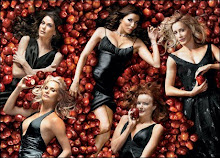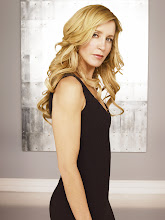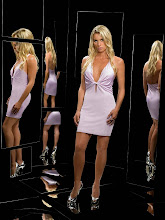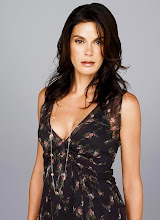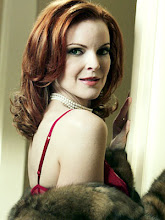Article #1
Celebrity Big Brother contestants coached to avoid race row repeat
Wednesday 31 December 2008
The stars due to appear on Celebrity Big Brother when it launches this week have been coached about the race row that consumed the show two years ago and warned not to repeat such behaviour.
http://www.guardian.co.uk/media/2008/dec/31/celebrity-big-brother-race-coaching
The reality show, which returns to Channel 4 on Friday after a two-year break because of the row involving Jade Goody and Bollywood actor Shilpa Shetty that prompted the most serious crisis in Channel 4's history, is expected to include celebrities including Ulrika Jonsson, Scottish politician Tommy Sheridan and Austin Powers actor Verne Troyer.
Programme executives said they were confident they have done everything necessary to prevent a repeat of the controversy that consumed the show, prompting more than 50,000 complaints.
Celebrity Big Brother executive producer Sharon Powers said all the celebrities had been spoken to about the 2007 controversy and been sent DVDs of previous series of the show.
"We have spoken to the celebrities. If they have not seen it already we have explained to them the things that happened in the last Celebrity Big Brother and made the rules really clear to them, what sort of language won't be tolerated and unacceptable behaviour," said Powers at the programme's launch yesterday.
"We have spoken to all of them in detail and they are all very clear what the boundaries are. I think they have all seen [the show]. We have told anyone who hasn't seen it to go and look at it on YouTube."
Executive producer Phil Edgar-Jones added: "Frankly they are not stupid. They know if they say anything like that they will be chucked out."
The last series of Celebrity Big Brother, which aired at the beginning of 2007, became the most notorious show in Channel 4's history.
Shetty's treatment by fellow housemates Goody, Danielle Lloyd and Jo O'Meara prompted 54,000 complaints to the station and media regulator Ofcom and led to effigies being burnt on the streets of India. As the row escalated, Gordon Brown was forced to defend Britain as "a country of fairness and tolerance".
Ofcom ruled that Channel 4 had breached the broadcasting code and Channel 4 was also forced to air three apologies ahead of the 2008 Big Brother series.
Powers said: "We don't ever set out to create controversy as such. What we aim to do is get an interesting bunch of famous people who we talk to and meet on an individual basis.
"The truth of it is we don't really know what is going to happen. The first time they meet each other is when they walk through the Big Brother doors. That's the beauty of Big Brother."
Edgar-Jones said a special welfare team would watch the contestants around the clock to spot if anyone was feeling isolated, unhappy, or not unwell.
"We do understand there is a lot of scrutiny of television at the moment. Procedures have been pretty much the same [and] we have tightened them up. If things are getting out of hand we will deal with them," he said.
David W illiams, the commissioning editor for Channel 4, said: "From a channel's point of view it has never been a case of sanitising Big Brother. As we do after every year we look at our procedures. We have got procedures in place which are tried and tested so that we can cope with every eventuality."
Celebrity Big Brother was rested at the beginning of 2008 in the wake of last year's race row, but its replacement, Big Brother: Celebrity Hijack, failed to capture viewers' imagination on digital channel E4.
The final of last year's Celebrity Big Brother, won by Shetty, averaged 5.8 million viewers across two hours of television. It peaked with 7.3 million.
But the final of this year's main Big Brother show attracted the lowest audience of any of its nine series' climaxes, with a peak of 5.1 million viewers watching Rachel Rice emerge as the winner, according to unofficial overnight figures.
The show's ratings high-point was series three in 2002, when Kate Lawler's victory attracted an average of 9.4 million viewers to the 10pm final night show – a 50% share of the audience.
The programme was axed in Australia this year because of low ratings.
Article #2
The right ethnic mix
Monday 22 June 2009
http://www.guardian.co.uk/media/2009/jun/22/masoods-eastenders-bbc
The director shouts "Cut!" - and wardrobe, props and make-up people swarm the set. One of the principal actors beckons me over and asks: "Can you pronounce it for us again?" As I say "Alhumdulillah" (praise to God) the rest of the cast repeat it over and over until they are satisfied it sounds right.
In the meantime, I am pulled into a discussion about the Indian sweets on set: are they the right ones; by tradition, which character would give them to whom?
I am not on the set of a British Asian film, but rather at the studios of EastEnders. For six months I have been working as one of a group of occasional consultants: looking over scripts, sometimes being on set, and advising on aspects of British Asian culture relating to the Masoods.
Playing unsafe
Albert Square's previous Asian family, the Ferreiras, were criticised as boring and unrealistic - their first names were a mixture of Muslim and Hindu, their surname was Portuguese. "We admittedly came under the spotlight with the Ferreiras," says John Yorke, the BBC's controller of drama production. "We played safe with them and ultimately didn't give them good story lines. We're certainly not doing that with the Masoods, but the devil is in the detail and now pretty much everything we write for them that has a cultural or religious aspect is checked."
While the Ferreiras were "safe", the Masoods' current story line is at the other end of the scale - with the elder son, Syed, embarking on a gay affair. "Part of the reason we chose the Masoods is that it does present us with a whole new set of taboos," admits Yorke. However, he says merely being able to feature such an issue is a positive sign. "Post 9/11, Muslim characters in drama became either saint or terrorist - there was no middle ground.
But the fact that we can now actually do a gay Muslim story line is testament to exactly how much we've moved on."
EastEnders is the third most popular series among ethnic minorities, according to Barb, the audience ratings body, behind The X Factor and Britain's Got Talent: on average 43% of the non-white TV viewing audience watch the programme. It also has a long history of featuring black and Asian characters: the first episode included a Turkish cafe owner.
And although cliched roles in soaps and primetime dramas also still exist, ethnic minority representation in drama has advanced across the board over the last decade or so with dramas such as the recent Moses Jones, which focused on issues in London's Ugandan community, and characters such as Anwar in Skins.
But Coronation Street's key Asian character, Dev, is rarely seen through the prism of his religion, and Channel 4's Hollyoaks takes a similar approach with its black and Asian characters. Does that make characters less realistic? Lucy Allan, series producer on Hollyoaks, says the show is keen not to hammer home ethnicity. "We recently had a skin bleaching story line around one of our female Asian characters, and obviously that is a culturally specific issue and it had a big reaction; some viewers were shocked, others identified with it. But as a rule we don't look at any of our ethnic minority characters in terms of just their ethnicity, and if the online viewer forums are anything to go by, we've got it right."
Research and consultation are employed by most broadcasters when it comes to black and Asian characters. But while this is a short cut to accuracy, it would perhaps not be necessary if there were more off-screen talent diversity.
Ade Rawcliffe, diversity and talent manager for Channel 4, believes there is still not enough representation behind the camera. "We're trying hard to make it easier to get in, to make it not about who your dad is, but there is still a way to go. There is no shortage of people from minorities looking to get into the industry, but finding and nurturing that talent is key."
Black Doctor Who
For Ben Stephenson, the BBC's controller of drama commissioning, on-screen representation is potentially even more important than off-screen in terms of attracting minorities to the industry. "The more on-screen we can do with minorities, the more those groups will feel like television is a realistic part of their experience and therefore a career option for them."
Stephenson insists that desire for more minority representation was not behind the casting of a black actor as Friar Tuck in Robin Hood. "Obviously you wouldn't cast a black actress in the role of, say, Margaret Thatcher but in a fantasy series like Robin Hood you've got leeway to play around with the characters. Similarly with Doctor Who - it's the least of our concerns whether the Doctor is black or white, it really is just about who is right for the part."
Yorke agrees that on-screen portrayal has improved, but acknowledges that diversity in the off-screen teams is still an issue. "We're working hard to rectify that, and what we really need is a long-term strategic investment in talent."
Things are changing - but given that one writer recently asked me "exactly how this praying five times a day works", there is some way to go before the industry can be sure that a lack of off-screen diversity is no longer an issue.
Article #3
Channel 4 to stoke race debate
Wednesday 14 October 2009
http://www.guardian.co.uk/media/2009/oct/14/channel-4-stoke-race-debate
As controversy builds around British National Party leader Nick Griffin's imminent appearance on BBC1's Question Time, Channel 4 is set to stoke the race debate by giving airtime to two professors who believe black people are less intelligent than white people.
The documentary, fronted by former BBC reporter Rageh Omaar, will explore what the broadcaster describes as "science's last taboo".
In the documentary, Race and Intelligence: Science's Last Taboo, Psychology professor Richard Lynn will say there is a global "league table", using evidence from IQ tests, to claim that intelligence is based on race, with north-east Asians in the top tier and Australian aborigines at the bottom.
Fellow psychology professor John Philippe Rushton, who has claimed that Europeans are more intelligent than Africans – and that men are cleverer than women – will also appear in the programme, due to be broadcast later this month .
"The differences between men and women's brains are due to spatial ability, but the differences between black and white and east Asian brains is due to general intelligence," Rushton tells Omaar. "That's what we think is the situation."
The academics appear as part of Omaar's investigation into controversial claims made by Nobel Prize winner and DNA pioneer James Watson two years ago that black people are less intelligent than other races.
Channel 4's head of specialist factual, Ralph Lee, said Omaar, now a presenter on Arabic language news channel Al-Jazeera International, also spoke to scientists who drew "radically different conclusions" to the views held by Lynn and Rushton.
"Does genetic science back up the idea that race and intelligence are linked? It is absolutely clear that it does not support the link. Rageh is able to challenge and present the absolute opposite arguments," added Lee.
"He didn't start with a fixed position – he started with an open mind – and he discovers that there are inequalities in society that are leading people with different backgrounds to perform differently and succeed differently in society and that is nothing to be comforted by.
"He thinks there are important things that need to be addressed but he thinks the idea of a link between race and intelligence or the idea that skin colour is an indicator of intelligence is complete nonsense."
Another Channel 4 documentary in the season of programmes, Race: Science's Last Taboo, will ask whether there are biological advantages to being mixed race. The season is being supported by a marketing campaign showing a mixed-race Margaret Thatcher and a white Usain Bolt.
Oona King, the Channel 4 head of diversity and former Labour MP, said: "With race we will always have a heated debate. The point about this season is that I think it will change the terms of the debate. There is no point sweeping it under the carpet."
BBC1's celebrity dance show Strictly Come Dancing was at the centre of a race row earlier this month when it emerged that dancer Anton Du Beke had made a racially tinged remark about his dance partner Laila Rouass.
The show's veteran presenter Bruce Forsyth later said the nation should get a "sense of humour" about the incident and compared it to Americans calling English people "limeys".
But King said Forsyth had missed the point. "I have a lot of sympathy for people who are not sure what is or isn't acceptable to say. My view is we need to open up the terms of the debate, not close it down," she added.
"The key point for me is that when people say you don't have a sense of humour, they are not taking the context into account. The context for a black child who is being bullied day in, day out and called racist names is entirely different from an off-the-cuff remark as Bruce was saying about limeys."
Griffin is due to appear on Question Time next week, with fellow confirmed panellists including the justice secretary, Jack Straw, and the black writer and critic Bonnie Greer.
King said it was important that viewpoints such as those held by the BNP were challenged in the mainstream. "My personal view is that if you don't confront people with counter arguments you allow them to move into a vacuum, especially when there is disillusionment with mainstream parties," she added. "I think it is incumbent upon the mainstream to challenge views that are reprehensible and off the wall."
Race: Science's Last Taboo begins with Rageh Omaar's documentary, Race and Intelligence: Science's Last Taboo, on 26 October at 9pm.
The BBC will only survive by understanding its diverse consumers
http://www.guardian.co.uk/media/2008/sep/15/bbc.television
A snail could crawl the entire length of the Great Wall of China in just slightly more time than the 200 years it will take for women to be equally represented in parliament. That was just one of a series of striking statistics from the Equality and Human Rights Commission in their Sex and Power report published last week.
It added that women hold just 11% of FTSE directorships, with the judiciary and others also strongly criticised. At the BBC, the figures are a bit better - almost 38% of all senior managers are women - but it does bring into sharp focus the challenge the whole media industry is facing to improve diversity among its workforce.
Tomorrow's Guardian Ethnic Media Summit is a chance to debate what is arguably our most pressing diversity issue - ensuring more talent from ethnic minority communities reaches the upper echelons of broadcasting. The growth particularly of young ethnic minority audiences, is soaring - way above the population average - making them a critical cultural and business challenge for everyone in our sector.
Things are definitely changing but still not quickly enough. The whole media industry needs to look afresh at what more can be done.
So why does a white, middle-aged bloke like me feel compelled to write about this? As the BBC's chief creative officer, overseeing our programme production made in-house, I believe passionately that only by drawing on the talents of every part of society can we best reflect the lives and concerns of our diverse audiences on screen.
We must do more and the BBC is certainly redoubling its efforts. And though ethnicity is very important, it is only one part of this story. We must also think in terms of age, disability, gender, social class and regional difference.
That is why I think the historic changes to move a significant proportion of BBC network production out of London to places such as Glasgow or North West England over the next decade might be key to all this.
We will transfer large numbers of staff from London but we will also recruit many new faces - a once-in-a-lifetime opportunity to add something substantially new to our gene pool of talent, to change the BBC's DNA a little.
We seem to be moving in the right direction, increasing opportunities for people from ethnic minority backgrounds at most levels.
The proportion of our staff from ethnic minorities is 11.5% - again comparing very well with both public and private sector organisations including the civil service, health service and the police. But as the Edinburgh Television Festival heard, still not enough people make it into senior management roles, particularly as controllers and commissioners.
The BBC has looked closely at the barriers to progress and announced new schemes to tackle them - costing £3m over three years.
Firstly, we need to change the way we recruit. We are dramatically increasing the outreach work we do - in community groups, colleges, schools and through open sessions across the UK - to encourage under-represented groups to apply to the BBC.
I recently worked with an energetic bunch of young students, mainly from ethnic minority backgrounds, who were introduced to the BBC by the University of Central Lancashire - from the former mill towns of Blackburn and Preston, not places we'd traditionally think to look for the next generation.
Then we need to be better at retaining talented individuals and supporting them in reaching their full potential and moving into senior roles. Our new mentoring and development programme, which offers greater one-to-one and intensive personalised support, is so important. In addition, our new trainee production scheme, which has just kicked off, and our journalism trainee schemes, have a strong diversity focus, so we are providing clearer pathways into all parts of the BBC.
On screen, we must constantly strive to reflect as accurately as possible the rich cultural mix of the UK.
Earlier this year BBC non-executive director Samir Shah criticised what he called "inauthentic representation" of ethnic minority communities, citing the Ferreira family in EastEnders.
It is unfair to highlight one five-year-old example from a drama series that remains the most popular programme on television among ethnic minority audiences. This example fails to reflect many other aspects of our work, particularly our in-house drama output. Our continuing drama series, including Holby City and Casualty, have led the way in casting diverse talent, in leading roles as well. Though we do not always get it right, overall we have much to be proud of.
The BBC set up the Writers' Academy, under John Yorke, four years ago, increasing the number of writers from diverse backgrounds working on our biggest programmes, including some of our continuing drama series.
In addition, programmes such as Criminal Justice, No1 Ladies Detective Agency, Life Is Not All Ha Ha Hee Hee, Shoot the Messenger, the entertainment series Last Choir Standing and a lot of our children's output have also been praised for the way they have represented diversity or addressed issues faced by communities from different backgrounds.
Part of this is ensuring we get closer to audiences when making programmes. For example, White Girl - part of BBC2's groundbreaking White Season - told the story of a white family relocating from Leeds to a predominantly Asian community in Bradford. Here the production team worked very closely with the community to ensure a sensitive and accurate portrayal.
In an increasingly globalised creative economy where competition will intensify, it is only by understanding our diverse consumers that we can stay relevant and survive. The BBC prides itself on keeping in touch with its audiences - to do so successfully we'll need to keep making changes, and fast.




